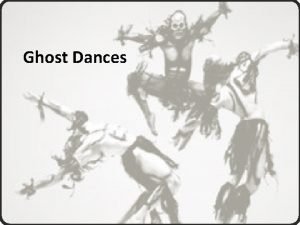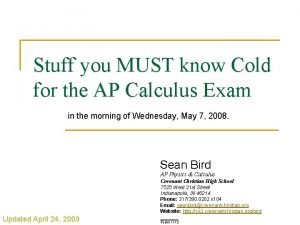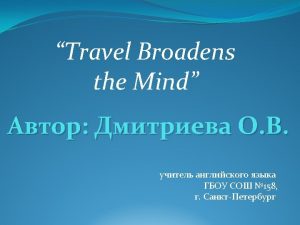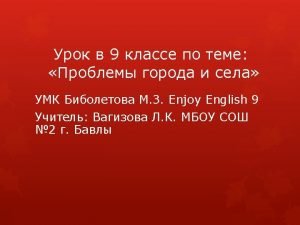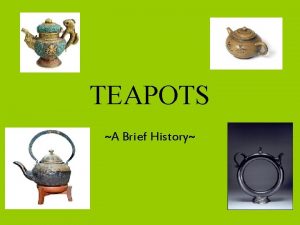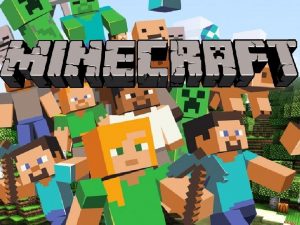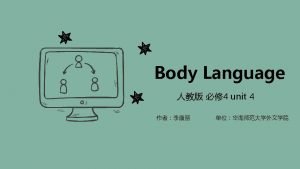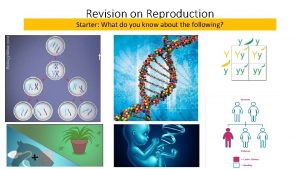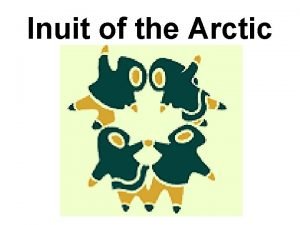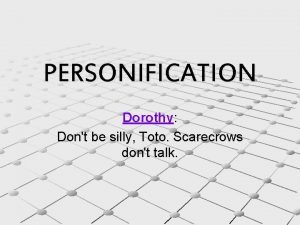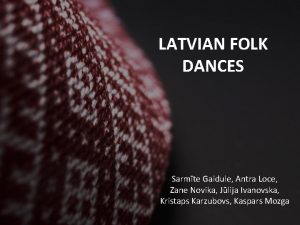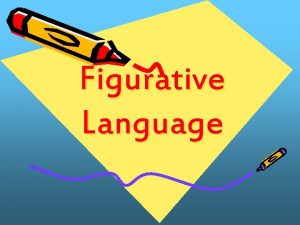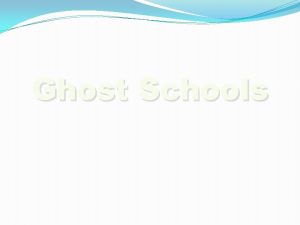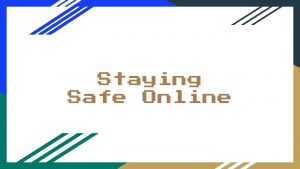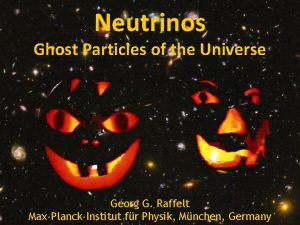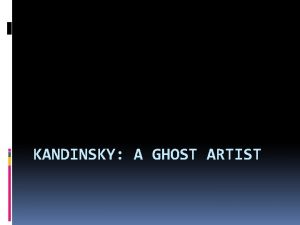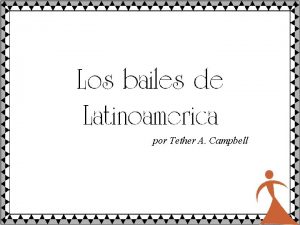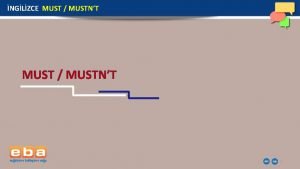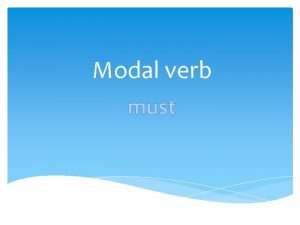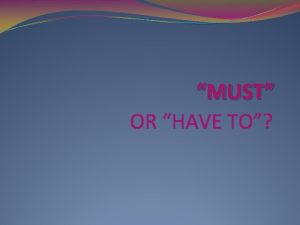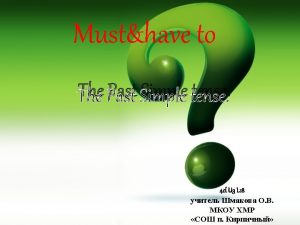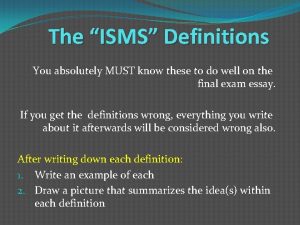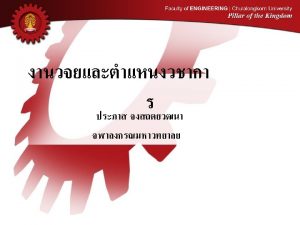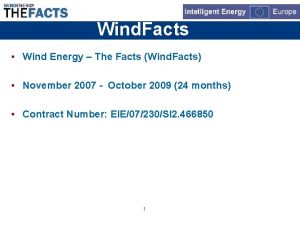Ghost Dances The Facts you must know these




















- Slides: 20

Ghost Dances

The Facts (you must know these…) Choreographer Christopher Bruce Company Various, including Rambert Dance Company First performance 3 July, 1981 Dance style A blend of contemporary (Graham-influenced) and ballet with elements of folk and social styles. Choreographic style Thematic and episodic with narrative elements. Strong characterisation Theme Political oppression in Chile Starting point The music and South American rituals and culture. Structure Seven sections, each characterised by a different piece of music or song. Number of Dancers Five women and six men (3 ghosts and 8 villagers) (Medium sized cast)

Continued. . Accompaniment: South American songs and folk tunes by Inti-Illamani and wind effects Costume: Belinda Scarlett Lighting: Nick Chelton Set: Christopher Bruce Staging: Proscenium (on stage with an arch at the front of the stage)

Describing Action (what) content Motif One From the opening section with the three ghosts: The ghosts stand with their feet in second position and do a full plié (bend) they then invert the right knee and lunge. This is followed by a drop to the floor then they roll to the opposite direction before recovering through a lunge into a balance with the leg in attitude and the arms raised to the side (second position) they then plié on the supporting leg and the arms ripple right/left. Motif Two From the section danced by the girl in the red dress: The dancer faces the side and begins by stepping backwards and pointing the toe. She then performs 2 triple runs which is accompanied by her arms swinging forwards and backwards followed by a kammat jump/turn to change direction. Her downstage arm extends up to the ceiling and then bends leaving the elbow point up as she turns to face the other side and steps back in preparation for the repeat. This motif is repeated a number of times throughout the piece

Describing Space (where) content Motif One From the opening section with the three ghosts: The ghosts stand side by side in a horizontal line and in close proximity whilst they perform motif one (as per previous description) they remain in contact with each other throughout until they perform the turn when their formation changes to a triangular shape with two dancers slightly further downstage to the other dancer. The use high, medium and low levels during this phrase. Motif Two From the section danced by the girl in the red dress: The dancer faces the side, off centre towards stage left and begins by stepping backwards and pointing the toe. She then performs 2 triple runs which travel horizontally from one side of the stage to the other. The phrase is performed in a straight line and involves some air travel when she performs the kammat which turns her 360 o.

Describing Dynamic (How) content Motif One From the opening section with the three ghosts: The ghosts perform this motif showing a range of dynamic qualities- the plié is very controlled and has an element of resistance. The actions are performed in sequence and smoothly flow from one to another until the turn when the action of the roll is sudden with a quick shift of energy which is more buoyant and sharp. The balance at the end once again returns to calm and controlled, sustained quality. Motif Two From the section danced by the girl in the red dress: When the girl in the red dress performs the travelling motif (as previously described) The dynamic quality develops from the beginning when the dancer moves quite slowly and sustained into a travelling action which is heavy and weighted. The triple run has a sense of swing whilst the arms move backwards and forwards in a heavy way. The jump is contrasting by being sharper and more buoyant before returning to the heavy weightiness. The arm is flung into the air in a quick fluid action before returning to the first action.

Describing Relationships (Whom & when) content Motif One From the opening section with the three ghosts: When the ghosts perform the first chain motif they are working in unison and are in contact until they perform the roll on the floor which is performed in canon. They then return to unison for the balance and plié. Motif Two From the section danced by the girl in the red dress: The girl in the red dress performs this travel motif initially with the other female dancers in slow motion and unison however she then performs the motif at normal speed by herself (solo). The other dancers are sitting/standing around the stage/on rocks watching her.

Expected Wording: • describe: provide detail • explain: give more detail or reasons • identify: • dance idea: what the dance is about • feature: any aspect of the choreography, for example, the movement content (action, space, dynamics), number of dancers, relationships, form, structure, lighting, costume, set, accompaniment.

Impact/Effect/Contribution Motif One From the opening section with the three ghosts: Type of Action/dynamics: Establishes characteristics; dancers bodies move as oneeeriness, bodies are very flexible but strong- almost un-human. The dynamicsresistant, sustained create tension which further enhances theme and mood Unison: creates a sense of unity amongst the ghosts and makes them more powerful. Proximity: working closely together provides a sense of team and a force to be reckoned with. They present as a united front which again makes them powerful. Their movement is very different to the villagers; the ghosts use classical/contemporary movement, lots of extensions, big jumps, balances and lifts which contrasts against the folkiness of the villagers. This helps to further enhance character. Motif Two From the section danced by the girl in the red dress: The nature of the girl in the red dress’ movements is one of sorrow and loss. The way she travels from side to side may suggest searching. Her movements are heavier and weighted suggesting fatigue, loss and sadness. The contrasting jumps suggest she is still fighting and trying to carry on. She dances by herself initially showing she has independence and strength. The gestures she perform suggest she is reaching out for help or has been taking captive.

The Physical Setting (Where it’s happening and how it is enhanced for performance) This includes: • • Lighting Props Stage/Set Design Aural setting

Accompaniment General Notes about Accompaniment: • Accompaniment includes music, silence, sound effects, voice and natural sound. • Accompaniment can influence the audiences opinions about the dance • Accompaniment can provide a stimulus/start point for choreography • Accompaniment can provide a structure for dance choreography • Accompaniment can provide a theme for dance choreography • Accompaniment can provide opportunities to demonstrate dynamic contrast, highlights and climax in choreography. • Accompaniment can help the audience to understand what the dance piece is about. • Accompaniment can provide a rhythm or exist in the background. In some works the musical accompaniment contrasts completely from the dance so it makes it challenging to watch. • Silence makes the audience focus completely on the movement and enables the audience to hear the dancers moving and breathing. • Percussive sounds can be made by dancers themselves.

Accompaniment Description: Silence: The piece begins in silence with a soft dripping noise Impact/Effect: • Establishes a tense and creepy environment/atmosphere • Makes the audience focus purely on the dancers and highlights the movement. • Enables to audience to hear the dancers breathing- adding to tension • Dripping noise suggest water dripping inside the cave- enhancing the set. • Shows the accuracy of dancers being able to move in perfect sync with each other without use of accompaniment to provide a rhythm. • Makes setting seem surreal because there is not aural influence to set scene. Description: Music: South American Folk Music by Inti- illimani: Pan pipes, classical guitars, percussion Impact/Effect: • Provides a geographical context (South America- Chile) • Creates a folk-style- cultural context reflective of society. • Pan pipes create an eerie atmosphere • Each section has a different track enabling the choreographer to establish different characters linked to social and cultural identities e. g. farm boy. • Music provides structure to the piece e. g. episodic and thematic with beginning same as end.

Accompaniment The piece starts in Silence with the occasional faint sound of drip, suggesting water dripping inside the cave. The use of silence creates a very eerie atmosphere allowing the audience to hear nothing but the movement and breathing of the dancers. The silence is sustained for a period of a few minutes which adds to the tension and almost unhuman atmosphere- it makes you frightened) After a period of a few minutes music begins with the faint sound of panpipes accompanied by percussion and gentle acoustic guitars. The music becomes increasingly louder playing the same ostinato repetitively. The music has a creepy and slightly sinister feel which enhances the character of the dancers (Ghosts) whilst introducing the ‘zombie-like’ villagers who repeat the same travelling phrase to the repeated ostinato.

Set / Stage Design General points about set: Sets the scene: Back drops can have scenes which relate to the story or theme. Projections can be made onto a backdrop There can be features, e. g. mini versions of houses, garden sheds, rocks etc. Things can be hung, stretched moved etc. There can be moving sets which change e. g. giant Christmas tree in the Nutcracker The set may be bare- not providing any additional setting but have interesting lighting A series of scenes like Still Life at the Penguin Café Sand or chalk on the floor other textures used by choreographer’s choice

The Set/ Set Design The Set Description: • Proscenium stage • Back drop: Opening of a cave looking out onto mountains, hills and water. The colours are dark and life-less creating a very ominous atmosphere. • Rock-like structures placed on stage. Effect/Impact/Contribution to piece: • The backdrop sets the scene- inside a cave looking out onto caves, mountains and lakes. The dark gloomy image is suggestive of an inhabitable land strange place, symbolic of somewhere humans (the living) wouldn’t normally be. • The villagers enter one side of stage and exit the other suggesting the cave is a place they are ‘passing through’ on their journey to life after death or the next chapter. • The rock like structures are used by the ghost as ‘look out’ points and to hide behind reappearing to ‘take a life’. The villagers also sit on them. The structures create levels enabling height and give a further visual element to the piece. • The size of the cave, mountanous image on the back drop is life size and so the dancers inside look proportionally small in contrast to the set- thus providing a geographical location and helping the audience understand more about this weird surreal place •

Lighting General Notes about lighting and how it contributes to dance performance: • Create an ambience, mood, atmosphere e. g. dark gloomy lighting or bright coloured lighting. • Colour washes can suggest a mood e. g. red; danger, white; stark • Spotlights can highlight and single our characters, possible main parts or an important moment • Spotlights can also highlight body parts e. g. a gesture or leg line • Side lighting can create shadows and shape lines created by the dancer in motion. • Colour washes onto a backdrop can add effect / create mood • Lighting enhances colours of costumes. • Lighting can create shapes on the stage e. g. shaft of light like corridors e. g. in Still Life at the penguin Café there are black and white stripes on the stage floor for the zebra section- thus enhances theme and habitat of the character • Natural light creates a sense of normality and lacks ‘theatre/dramatic’ effect

Lighting begins very dim with shadows created by side lighting, highlighting features of the ghosts as they move silently around the space Colour is dark blues and grey with some soft white as it to suggest the shadow cast by the moon Lighting gradually becomes brighter as villagers arrive on stage and the colours begin warmer which highlight the different colour and textured costumes. Significant changes in lighting is at the end of each section when a bright yellow/green light appears, along with the stillness of the dancers and the silence of the accompaniment tells the audience that a life has been taken. The lighting reflects the mood and meaning of each of the sections, dark and gloomy when the ghosts perform, brighter for the villagers as the story of the fate of the villagers unfolds.

Costume General points about costumes: • Costumes can help dancers get into character and the audience to make sense of the work. • Masks: Make theme clear to audience and distinguish characters e. g. Still Life, animals wear full or half masks to show character. • Length: Length can indicate age e. g. short-younger character, fuller length suggests maturity. Also length may enhance movement because of the flow of the fabric in motion • Fabric: Choice can reflect wealth e. g. velvet = well off. Tight fitting sculps body and makes movement clear to audience. Shiny fabric suggest modern and may deal with current issues. • Colour: Highlight and identify dancers. Enhance the dance idea e. g. khaki suggests military. Red could suggest blood, passion, anger. Grey suggests drab, functionality. White, purity. • Texture: Can add depth and movement. Matted hair in Ghost Dances suggests decomposing dead characters.

Costumes Ghost Dances Description: Ghosts: Unitards with painted markings suggesting skeleton. Matted hair hanging from waist, knees and arms. Full face Masks with hollowed out eyes, highlighting skull and matted hair Villagers: All different suggesting different characters: defines age, wealth, gender and character Girl with red dress, long dress, suggests maturity, red, passion, blood. Style suggests wealth, dress defines gender. Farm boy, sack cloth, cheap suggests less wealth, younger character. Texture cheap, drab colour. Girl in white dress, suggests purity, hair is half up and down with ribbon, suggests youth. Playful length used in choreography to flirt with male partner. Male dancers; suit, suggests social class and wealth. Maturity. Wide tie suggests joker and playful sense of humour- used as a prob. Other villagers female- gender specific costumes (dresses) various colours hinting at character and social status/class.

Who is involved in Dance Performance? • Publicity • Marketing • Stage Management • House manager • Box Office • Sound • Set Designer • Lighting Designer • Hair and Make-up • Costume Design
 Ghost dances costumes
Ghost dances costumes Stuff you must know cold calculus bc
Stuff you must know cold calculus bc Do you know these places
Do you know these places Do you know these places
Do you know these places Good teapot vs bad teapot
Good teapot vs bad teapot Know history know self
Know history know self Normalizing flow
Normalizing flow I know who goes before me i know who stands behind
I know who goes before me i know who stands behind So you think you know minecraft
So you think you know minecraft If you are happy
If you are happy Personification in the raven
Personification in the raven If you're blue and don't know where to go
If you're blue and don't know where to go Do asexuals have sex
Do asexuals have sex Do you know who you are
Do you know who you are Wherever you go i will follow whenever you know
Wherever you go i will follow whenever you know I hope the days come easy
I hope the days come easy Dances performed during wedding feasts
Dances performed during wedding feasts Pentozali dance
Pentozali dance Moon dances around my fear.
Moon dances around my fear. Latvian folk dances
Latvian folk dances Polly peters positively played ping pong
Polly peters positively played ping pong
